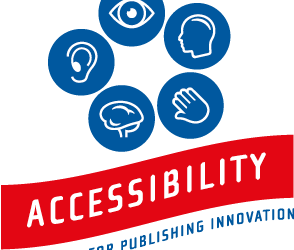Depending on who you’re speaking with, you’ll hear a different perspective on the state of innovation in scholarly communications. Some judge the state of innovation by value creation (mostly monetary value), other assess the state of innovation by volume (how many innovations, start-ups, etc. there are), or scope (how broad is the potential impact on academics and other participants in the ecosystem), and still others judge innovation by how much is being invested. All of these perspectives fuel interesting discussions, but are we getting anywhere?
This month we asked the Chefs: What is the state of innovation in scholarly communications today?

Tim Vines: I think we’re in a tough spot. There are plenty of good ideas out there, and there are people willing to dive in and chance their arm with a start-up. However, the surrounding ecosystem of angel investors, mentors, incubators, and venture capital that knows and understands academic publishing is almost nonexistent. Digital Science is a notable exception, but one elephant does not make the Serengeti.
The critical problem is market size: tell any regular investor that there’s 2 million papers published per year (i.e. the total addressable market), and they’re gone before you can start your next sentence. They’re looking for investments in a total market of $1 billion in revenue per year. Unless you come up with a service where everyone queues up to pay $5K per article, you’ll never make this much money. Investors in academic publishing ventures must therefore adjust their expectations downwards by a few orders of magnitude. As far as I know, academic publishing startups are no less prone to failure than any other, so the reduced potential returns make our area unattractive for investment.
The symbiotic relationship with academia also introduces an ethical and moral minefield that is invisible to outsiders from ‘normal’ industries. Anti-corporate feeling is running high, so things like price increases or upsetting a few Editors can be potentially fatal. Investors or mentors that do not understand these constraints will increase the risk of disaster.
As in most other industries, the big incumbents do work hard to innovate and create new services or products. However, without a startup culture there’s no way to nurture truly disruptive ideas to fruition and the overall rate of innovation is low. I can only see this changing if the other incumbents spin off their own versions of Digital Science, or if big outsiders like Google or the Chan Zuckerberg Initiative step in and create academic publishing incubators and investment programs. Let’s hope that one or both happens soon.
…without a startup culture there’s no way to nurture truly disruptive ideas to fruition and the overall rate of innovation is low.
Joe Esposito: This question is really too broad to respond to directly. What kind of innovation are we talking about? Are we talking about game-changing developments in business strategy or technology? Or are we talking about the continuous improvement that all organizations undergo as they refine their product offerings and internal workflow? And while we are debating those questions, what the heck is an innovation, anyway?
I think the idea of innovation has been taken over by some of the more dramatic developments in the scholarly communications space in the past few years (Google Scholar, the Big Deal, Twitter). That’s unfortunate, as people are ceaselessly creative; it’s one of the few universals. Asking every innovation to be the next Mendeley or two-factor authentication sets the bar too high. As Voltaire never said, when it comes to innovation, let’s all tend to our gardens.
Kent Anderson: The approach to a lot of early innovation investment seemed informed by the belief that moving the print audience online was like repotting a plant — you just needed to provide a bigger pot, more sunlight, and good water, and after the shock, the plant would thrive. So a lot of innovation assumed the root system would just come along, or even existed. Now, I think everyone has seen that the root system is far more complicated and expansive. As a result, innovators that can work across publishers rather than from within them have emerged. This has been good overall because it has created an innovation marketplace with more startups as going concerns. Having an innovation marketplace has also led to a few interesting trends.
First, innovation is increasingly captured by the large companies, as mergers and acquisition activity around startups (Mendeley, bepress, SSRN and Elsevier; various startups and Digital Science) has naturally kicked in as the value of innovation has increased relative to the mature content market. Everyone is seeking the next growth curve, and the commercial entities seem to have both the money and the internal structure to make moves. In addition to the “big getting bigger” phenomenon, this creates other interesting dynamics, as publishers are now competing by offering services to other publishers, something the market still has to figure out if it likes and trusts.
Second, there seems to be a US/EU cultural dichotomy among innovators, with almost two camps existing. The EU startups have actually been more effective and innovative, and they’ve kicked off a lot of the activity in the space. The US startups are still controlled largely by Digital Science, which itself has ties into the EU. I think the assumption might have been that innovation would come from the US, but actually few US publishers are investing in startup or innovation activity, which is probably short-sighted. This has been a surprising trend.
The EU startups have actually been more effective and innovative, and they’ve kicked off a lot of the activity in the space…I think the assumption might have been that innovation would come from the US, but actually few US publishers are investing in startup or innovation activity…
Third, I think innovation is harder now because there is more uncertainty in the market, which is causing a lot of management teams to play it safe, if only to avoid blame if things continue to tighten. This is a long-term mistake, I think, but a real factor in the pace of innovation success. It especially hurts the smaller organizations that have less margin for error (or feel they do), as lower levels of innovation only leave them even more vulnerable or dependent.
Our innovation marketplace is growing, but there is plenty of uncertainty, and because innovation is a capital-intensive exercise, the larger and better capitalized organizations can do and acquire more of it. That doesn’t mean a big idea at a small publisher can’t become the next big thing, but it would be unusual to see a small organization commit the requisite time and resources to innovation, which takes patience and fortitude in addition to ideas.
Phill Jones: Over the past year, I’ve become increasingly optimistic about the state of innovation in scholarly communication because it occurs to me that we’re coming to the end of a period of what I think of as innovation consolidation. That is to say, in recent years publishers, libraries, funders and researchers have been figuring out how to adapt not so much to the new technologies that have emerged over the last 5 years or so, but to the changing needs of the academy and how technology fits into those needs.
The conversations that I’ve had with people at conferences and meetings over the last year have increasingly had a different tone. The best examples that come to mind are the FAIRData stakeholder meeting that American Geophysical Union organized last month in Virginia and the Belmont Forum Publisher Workshop that I attended in London earlier in the year. Both of those conversations focused not so much on the possibilities of the technologies that are available but on the social and cultural challenges that are impeding adoption. More importantly, they involved real cross-stakeholder discussions that focused on identifying differences in perspective and searched for common ground. In my opinion, we haven’t done that very well as an industry until recently.
Another related cause for optimism is that as we’re learning to better contextualize innovation and thereby use it more effectively, that clears the way for the next wave of cutting edge thought. Frankly, that’s happening just in time. As new informatics and machine learning technologies start to make a more noticeable business impact, the industry needs to be ready to understand and adopt things like topic modelling and, in the not too distant future, assertion stores, in order to remain competitive and relevant.
…we’re learning to better contextualize innovation and thereby use it more effectively, that clears the way for the next wave of cutting edge thought
Charlie Rapple: Perhaps it’s my vantage point (swimming in scholarly communications innovation waters myself) that means I see innovation everywhere I look: many “by researchers, for researchers” tools, many ex-publishers or ex-librarians or ex-vendors creating their own solutions to problems they’ve grappled with, many established players experimenting with diversification, and indeed a good number of new entrants to the market applying skills and experience from other sectors to scholarly communications. As I wrote in one of my early Scholarly Kitchen postings, “the commoditization of technology, and the advent of the web, have made it substantially easier to set up, run and market a new business” and the scale and scope of innovation has certainly grown during my 20 years in the sector; I won’t be the only Chef who points to Bianca Kramer and Jeroen Bosman’s now-many-more-than-101 Innovations in Scholarly Communications project as exhibit A. Does that mean innovation in scholarly communications is healthy? The fact that a thousand flowers are blooming feels like evidence of that. But will they bloom and grow, or wither on the vine? With so many innovations, the idea is strong but the execution is weaker — I’ve written about this at length in another post, too; it basically boils down to whether or not the innovators (or the people they partner with) have adequate business experience or sufficiently strategic instincts.
More importantly, do we analyze the state of innovation in scholarly communications by considering its scale (activities), or its role (outcomes)? Arguably, to consider an innovation a success it needs to be either revolutionizing how a sector works (in our case, dramatically improving how knowledge is communicated and applied) or driving the economic growth of that sector. From that perspective, while there is lots of innovation happening, very few initiatives are sufficiently ambitious, well-funded or well-targeted to be substantially moving the scholarly communications sector forward. So while the state of innovation looks initially to be very healthy, once you exclude the very many experiments with incremental change, you are left with only a very few examples of successful innovation in scholarly communications, and a particularly conspicuous lack of innovation in the mechanisms by which researchers are evaluated and rewarded — the cornerstone on which the market dynamic of scholarly communications depends. Real innovation there will unlock the potential for much more significant innovation throughout the rest of our community.
…while there is lots of innovation happening, very few initiatives are sufficiently ambitious, well-funded or well-targeted to be substantially moving the scholarly communications sector forward
Lettie Conrad: In my experience, innovations in publishing encompass both the human and the technological. I’ve seen publishing innovations this year range broadly from aggressive leaps into new territories, such as software-as-service offerings, to transformations in the processes and mindsets of traditional business practices. The former are easier to spot, such as as Elsevier’s app acquisitions. The later are often behind the scenes in smart workflows and resources, the benefits of which are felt in the long term and are can be much less splashy. Optimizing for content discoverability and accessibility are often less about leveraging the latest technology and more about modernizing the basics of publishing. In many cases, the impact and quality of innovative publishing solutions relies on our ability to ascertain and then leverage a keen understanding of the information practices of readers, authors, faculty, librarians, and other users of our resources.
Jill O’Neill: The most accurate response to this question will depend upon the specific constituency of which one is a member. There are libraries encouraging faculty to create and deliver new forms of output just as there are publishers actively engineering new infrastructure. Looking at scholarly societies, it’s encouraging to see those communities thinking about what best serves the needs of their particular discipline.
There are some very cool approaches to various problems — both technology-related as well as business-related. As one example, I would point to the JSTOR text analyzer. Drag and drop your PDF and find an abundance of related materials. As another, Cengage Learning is introducing Cengage Unlimited, a Netflix-style subscription service for textbooks. From the University of Oklahoma Libraries, there’s a nifty “open-source Markdown Converter designed to help make open content, including open educational resources (OER), shareable to the fullest extent possible” (see more here).
Everyone seems to be hunkered down, trying to gather and disseminate the data that will tell us what we need to know about scholarly requirements or about the needs of students and other online visitors. That said, based on the occasional rant emerging from the client base, I know that the innovation may not be rolling out as quickly as might be desired,.
The wheels of progress don’t always roll rapidly; sometimes innovation moves more slowly. Give us time to work out all the kinks. We’ll get there.
Alice Meadows: I don’t think there’s any shortage of innovation in scholarly communications today, at least, not in the broadest sense of the word (per Merriam-Webster: “a new idea, device, method”). At meetings this year including APE, SSP, and Force 2017, innovation — and innovators! — have been very much in evidence. A few interesting examples that were new to me include Methodicate (which enables version control and collaboration), sci.AI (which converts plain text biomedical research into semanticized, machine-readable versions), and Profeza (a tool for sharing additional information like experimental design, failed hypotheses, raw data, repeat data, etc. that would otherwise often go unpublished). Like more established innovations such as Publons, Overleaf, and Figshare, these are all researcher-initiated companies, which is perhaps one key to their success. Most are for-profit startups that are likely to be acquired by larger commercial organizations if and when they demonstrate that they’re successful. And most use elements of the non-profit, open research infrastructure provided by my organization (ORCID) and others that are supported in part by those larger commercial organizations.
I can’t help feeling that fewer – but smarter – innovations might be more helpful for researchers. Although different communities do genuinely have different needs, they also have a lot in common.
However, the one thing that gives me pause for thought is whether researchers actually need so many different platforms and systems. Arguably they already have an overwhelming array of tools and services that are intended to make their lives easier. The authors of this recent overview of online networking, data sharing and research activity distribution tools for scientists advise: “we suggest keeping it simple, use a few tools, and focus on fundamentals – be smart with the time you have available.” I can’t help feeling that fewer — but smarter — innovations might be more helpful for researchers. Although different communities do genuinely have different needs, they also have a lot in common. Perhaps future innovators should focus more on those commonalities and seek ways to collaborate on developing tools and services that meet most of the needs of most researchers?
Ann Michael: The good news is that there is a lot of innovation of various sizes impacting scholarly communication. Looking at the Chefs’ answers, it’s easy to see that innovation exists in all shapes and sizes. While some feel small innovation is critical, others seem to discount incremental innovation in favor of larger leaps forward. We actually need them all. It’s a matter of timing. From an organizational perspective, we need to look at what can make us more appealing and competitive in the short-term (roughly equivalent to incremental innovations) while also considering, and acting upon, where the larger and more fundamental changes in our environment are likely to take us (more evolutionary innovation).
But, in echoing some of Tim Vines’ thoughts, we better be watching out for the organizations out there that have made it their mission “to change the world.” If they determine to do it, these organizations could simply mow over many of the issues and constraints that paralyze, or at least slow down, those innovating from the inside. Their focused attention could truly result in radical deep change, changes that re-architect the reward system, alter how we vet and validate discovery, redefine the nature and accessibility of the artifacts that are critical along the discovery path, and the list could go on. One possible reason they could do this is because they might have less awareness and concern for the collateral damage. They would have the funding and clout to allow the system to “break” before it found a new and acceptable normal (remember that “breaking” could very well be in the eyes of the beholder).
Now it’s your turn.
What do you believe is the state of innovation in scholarly communications?
Don’t be shy! (But remember to be nice)
Discussion
3 Thoughts on "Ask The Chefs: What Is The State Of Innovation In Scholarly Communications Today?"
Defining our industry in terms of manuscript production is indeed limiting. With global research spending approaching $2 trillion per year, it means that a 1% improvement in research efficiency is worth $20billion. That should get the attention of VCs!
By focusing on workflow and “validated assertions”
as a way to measure and increase the efficiency of the entire research lifecycle, publishers and start-ups should have plenty of growth opportunities. Elsevier and Digital Science both got the memo. I’ll be making a presentation about this, with particular reference to machine learning, at the upcoming APE meeting in Berlin in January (2018).
I have to throw in Hypothesis & Protocols.io to the discussion.
Hypothesis, because annotation is a thing whose time has come & the groundwork has been laid with standards, open source, open access, etc.
Protocols.io because more & more journals are seeing the value of structured methods sections, as indicated by the expansion of the STAR methods pilot from Cell Press to all of Elsevier, and identifiers for ALL THE THINGS is a growing trend.
Really like the looks of Methodicate, too, and keep an eye on what Coko is doing in open source.
Tim has a great point that anti-corporate sentiment is a major risk factor for companies launching in this space and we all need to do our part to show that for profit companies do indeed improve the social welfare of academia, but the massive new bio fund from a16z https://techcrunch.com/2017/12/14/andreessen-horowitz-has-a-new-450-million-bio-fund/ is at least incubating more startups from people who care about research, so that’s a start.
One emerging innovation revolves around going beyond the traditional definition of the version of record. The new journal article has enriched content (videos, visual abstracts, audio clips), new content styles (short-form articles, non-technical text summaries), as well as raw data and protocols made available. Journal editorial offices and even authors are taking keener interest in alternative content products that can be used to engage with both core and wider audiences.


